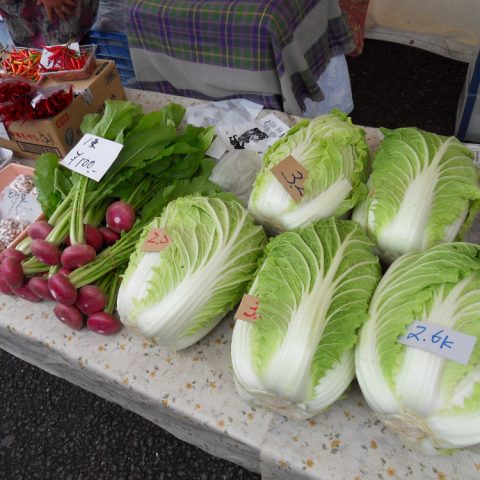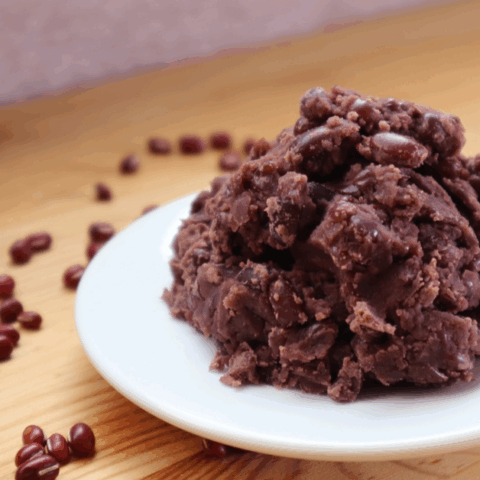
In this blog, I will introduce some of the special foods of Hiroshima Prefecture, which has overcome the tragedy of the nuclear bombing and has since come to inherit the technological industries of the next generation, along with its beautiful nature and rich culture. This prefecture is next to the Seto Inland Sea, with about 140 islands around it. It has a low annual precipitation and a mild climate year-round. Therefore, Hiroshima is best known for lemon and oyster farming, which thrive in these conditions.
Additionally, If you’re a baseball fan in Japan, you might know about the Hiroshima Carp. Interestingly, the name “Carp” is inspired by the Koi fish. Moreover, at Hiroshima Castle, also known as “Carp Castle,” you can find many koi fish swimming in the castle moat since the city is known for koi fish cultivation. The koi is known to be an auspicious fish and is a prominent symbol of the local culture.

Carp Castle – Photo Credit: ay_photo
There are many charms here, but today, one highlight we’ll focus on is “The Hiroshima Brand.” In 2007, Hiroshima officially started recognizing outstanding local products as regional brands. The aim is to boost brand recognition to grow the local economy, increase demand for these products, produce a positive image of their city, and bring in new visitors.
Let’s explore the branded products, which have the essence of this charming area’s uniqueness, and experience the beauty and richness through its cuisine!

Fresh Oysters – Photo Credit: Yukiko Kanada
The Milk of The Sea: Hiroshima’s Oysters
Oysters, often called “the milk of the sea,” contain various nutrients, making them a well-balanced and healthy food. They are particularly beneficial for enhancing liver function and are suitable for those suffering from anemia. Interestingly, there are about 200 species of oysters worldwide, with approximately 30 species inhabiting the Japanese sea, and 60% of those 30 species are from Hiroshima Prefecture alone.
What makes Hiroshima oysters famous is the quality of the water. The rich nutrients that flow from the local rivers are great for plankton, which serve as oyster feed. The gentle waves and the seawater temperature also provide the best conditions for oyster spawning and growth. The oysters here are known for their large size and intense sweetness.

Women having a stomachache – Photo Credit: maroke
However, there’s one thing oyster lovers might fear, and that’s norovirus. Norovirus is common in shellfish, including oysters, and poses a risk of food poisoning when eaten raw. If seawater becomes contaminated with norovirus, shellfish are continuously exposed to this polluted water. In general, the infected water goes through the oyster’s system and collects in their organs, and the virus becomes concentrated over time without multiplying. As a result, there is still a possibility of getting unlucky sickness by eating oysters without proper cooking. The important point here is the safety of Hiroshima oysters.
For instance, Hiroshima Prefecture has the strictest shipping standards in Japan. For example, regarding shellfish toxin standards, while Japan’s regulation limit is 8MU, Hiroshima has a limitation rule of 4MU, which is twice as strict as the FDA’s world standard. Also, oysters for raw consumption and cooking are harvested from separate areas of the prefecture. The oysters selected for THE • HIROSHIMA BRAND are mostly for cooking. Since they pass strict tests, even if you’re not sure how to cook them properly, you can still enjoy them. With their oysters boasting the top share of the market, they put effort daily to ensure their oysters are delicious and safe for everyone to enjoy.

Oysters – Photo Credit: Rafael Hoyos Weht
For more details about Japan’s finest oysters, you can check this blog as well. Now, let’s see what different kinds of oysters they have here.
堀口のかき Horiguchi Oysters
Horiguchi oysters, farmed in the northern part of Hiroshima Bay, are known for “the authentic taste of real oysters.” By using ultraviolet flow water and a microbubble sterilization system, the farmers are able to remove all impurities while preserving the natural flavor and aroma. The harvesters always ensure each oyster maintains its fresh and sweet milky taste.
What’s more, Horiguchi oysters are pure white and odorless. They are only available for shipping from November to March during harvest season. Additionally, the quantity produced is limited, and they are only shipped to selected stores. Since they are precious oysters, there are online sales restrictions of 100kg per day. If you have the chance to try them, I highly recommend indulging in their authentic flavor. Don’t miss out! Please note that there are two types of oysters available, one for raw consumption and one that requires cooking, so make sure to check when buying online.
草津かき Kusatsu Oysters
Kusatsu oysters, raised near the Kusatsu coast with rich nutrients, are known for their firm texture and not shrinking when cooked. They’re also shipped to the Toyosu Market, where top-quality fresh ingredients from all over Japan are sold, making them highly regarded across the country.
While all fresh oysters from Amibun Kaisan are designated for cooking, Kusatsu Oyster Hut sometimes offers raw consumption oysters during events. The best part of Kusatsu Oyster Hut is that you can enjoy unlimited freshly grilled oysters for 60 minutes at affordable prices. Moreover, you can add seasonings to your oyster and even bring your own beverage. Just keep in mind that there might be a fee for bringing alcohol.
Address: https://maps.app.goo.gl/2wf2Tzc36Pk7axjk9
米田海産の広島かき Yoneda Kaisan Oysters
Established in 1907, Yoneda Kaisan has been dedicated to producing “oysters born and raised in Hiroshima” for over a century. They’re known for having top-class fishing grounds among oyster producers in the prefecture. They handle everything from landing to purification, sorting, and shipping, ensuring everything from minimal waste of time to outstanding freshness and quality. Their oysters have a plump texture and a rich, sweet flavor. Plus, they shrink less when cooked, making them perfect for a variety of dishes.
You can find Yoneda Kaisan oysters at Chez Yamarai, a French restaurant, and you definitely should try “Oyster Varieté,” where you can enjoy five different flavors of oysters. It’s Yoneda Kaisan’s recommendation as well, so be sure to try them.

Hiroshima lemon – Photo Credit: こりんご*
Hiroshima Lemon
Akashu
Hiroshima lemons have been cultivated since 1898 and are currently Japan’s most-produced lemons. The warm climate of the Seto Inland Sea region is perfect for their growth, making them rich, aromatic, and refreshing. Among the lemons of the prefecture, the Akashu stands out for its beautiful appearance and nutritional richness especially. In addition, they are wax-free, allowing you to use the skin safely.
Akashu lemons are available as fragrant green lemons from October to December and juicy yellow lemons from January to May. Additionally, from June to July, stored lemons are shipped, and from July to September, greenhouse lemons are supplied, making them available all year round.
I am pretty sure that putting Seto Inland lemons on delicious fried oysters “Kakifurai” is so tasty that it feels like your cheeks fall off (Japanese people say this phrase when eating incredibly delicious food).

Limoncello – Photo Credit: Roberto Patti
Limoncello seto
On a different note, have you heard of Houmeishu before?
It’s a traditional Japanese liqueur infused with 16 kinds of herbs in a base of shochu, glutinous rice, and koji (malted rice). It’s a famous specialty of Tomonoura in Fukuyama City, Hiroshima Prefecture.
You can learn more about Houmeishu here, but what I want to introduce this time is the “Limoncello” from Hatta Houmeishu Shop.
Although this isn’t certified by THE • HIROSHIMA BRAND, the “Limoncello” from Hatta Houmeishu is made using only lemons from the Seto Inland Sea region. Due to aging and abandonment, lemon fields turn into wild mountains after about ten years. Hatta Houmeishu makes Limoncello from the peels of the wild lemons grown on these abandoned lands. However, since there’s not much “happiness” in Wild Lemon Mountain, the product is named “Lemons of Happiness Mountain.”
With Japan facing a low birthrate and an aging society, abandoned fields are increasing rapidly. Because It’s essential to protect Japan’s traditions, culture, and food industries, I would appreciate it if you could share or try these products.

Hiroshima Momiji Manju – Photo Credit: 灯螺城
Hiroshima Sweets
Momiji Manju – Nishikido
Established in 1951, Nishikido is a traditional Japanese confectionery shop. The “Momiji Manju,” is made with local rice flour, and the dough of this manju is shaped like Momiji leaves, which are the prefectural flower and tree of Hiroshima, giving it a delightful chewy texture. Furthermore, Nishikido selects only the finest ingredients, such as red beans from Tokachi, Hokkaido. In 2008, Momiji Manju was selected as a designated specialty product in Hiroshima. Its slightly sweet and simple taste has won the hearts of people of all ages.
Actually, there are two more Momiji Manju brands selected for THE•HIROSHIMA BRAND as well (Fujiiya & Yamadaya). Therefore, please try them out and let us know which one you found the most delicious on your Instagram story. Don’t forget to tag us @arigatojapan!

Orange Daifuku – Photo Credit: Ashinosuke
Original Hassaku Daifuku – Kashihara
In 1983, inspired by the struggles of farmers facing challenges in cultivating damaged Hassaku fruits that sold cheaply, Shinnichi Kashihara started to use Hassaku in the signature product, “orange mochi.” Hassaku is originally from Onomichi City, Hiroshima Prefecture, and is known for its crisp texture and bittersweet taste. It has a lot of vitamin C, helps reduce acidity in the body, and promotes fatigue recovery due to its abundant citric acid. The combination of bitter Hassaku and sweet white bean paste, wrapped in mochi, has gained awareness as a souvenir of Hiroshima.
In addition, there are also daifuku made with Amanatsu, orange, lemon, Anseikan, other fruits, etc. Since they are made with fresh fruits, they have a short shelf life of only three days, within which you can enjoy them. However, they are safe products without using preservatives. With various flavors depending on the fruit inside, they are recommended for both those who love sweets as well as those lacking a sweet tooth. Try finding your favorite daifuku. For the best texture, please store them in the fridge (making sure to enjoy them before expiration) to adjust the hardness to your liking. It’s recommended to eat them when served at around 10 to 15 degrees Celsius.

Hiroshima Style Okonomiyaki – Photo Credit: Roméo A.
As I mentioned before, the oysters I introduced today are usually for cooking since cooked oysters are known to be more delicious overall. This is because oysters for raw consumption are cleaned with a sterilization process that involves a 2-3 day fasting period, resulting in a smaller and more watery texture. On the other hand, cooked oysters retain their nutrients, keep a plump size, and offer a satisfying texture. However, since their oysters are known for maintaining their size and texture even after cooking, this makes them so much more precious even when eaten raw.
Not just oysters, there are many gourmet brands in Hiroshima, such as lemons, Momiji manju, Hassaku daifuku, and even okonomiyaki. If you’re interested in Hiroshima’s food culture, I strongly recommend you join this tour. Our professional guides will ensure you experience the charm of Hiroshima!
Featured Photo Credit: アクセルF
Ready to try some of Hiroshima’s delicious foods for yourself?, then come join our Best of Hiroshima food tour, and experience all the mouth-watering options the city has to offer.




